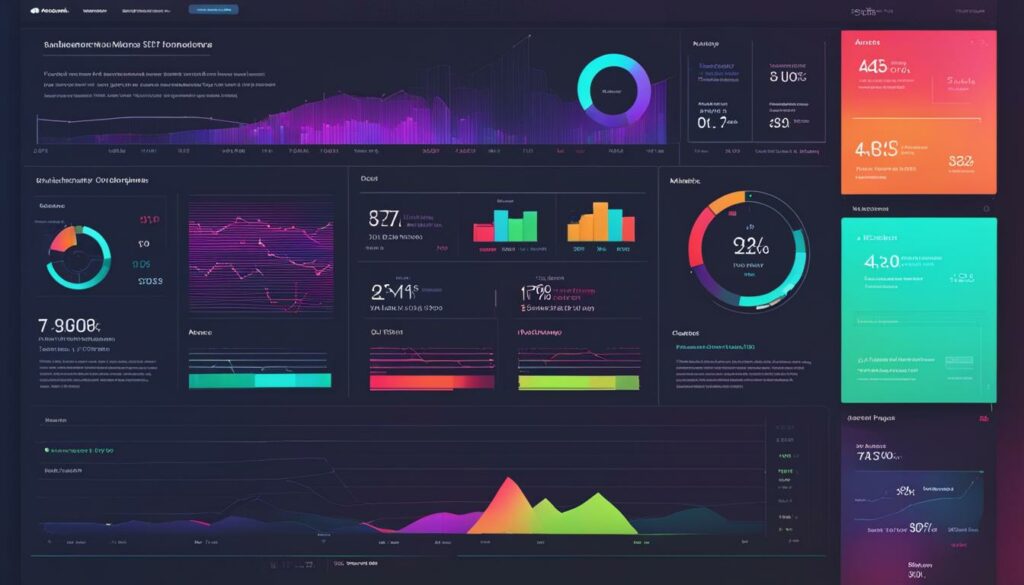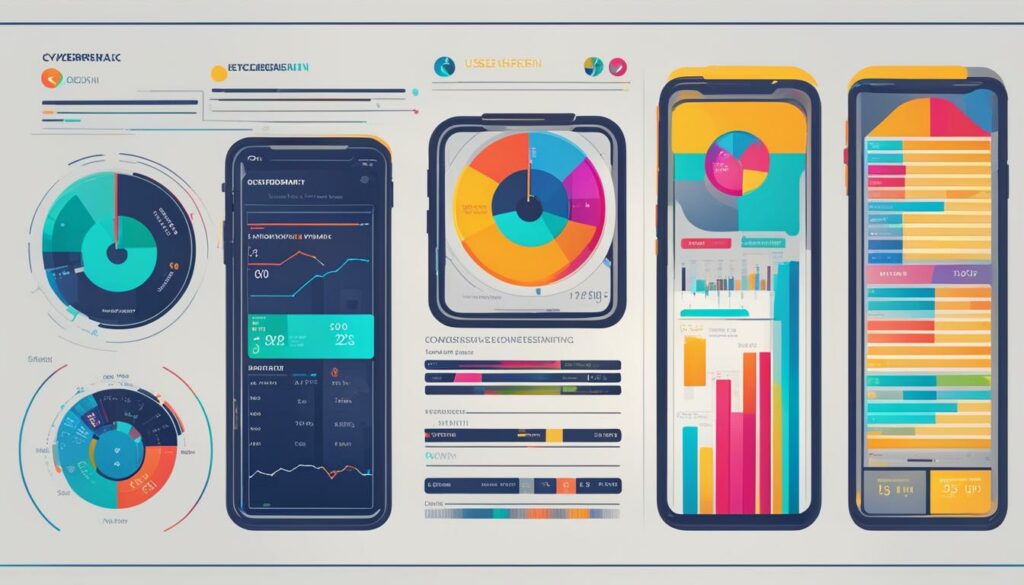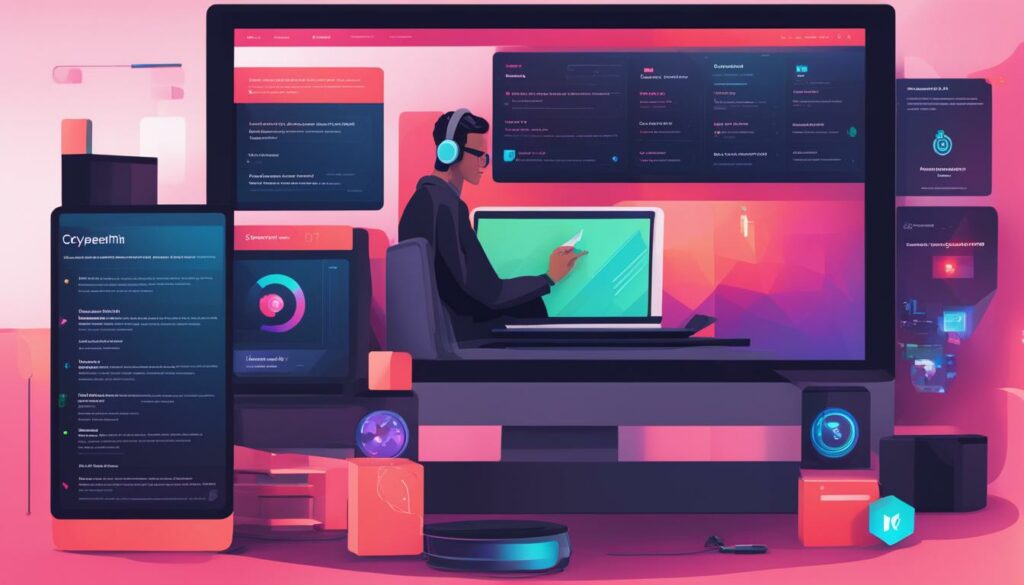Welcome to our comprehensive guide on performance analytics in hosting. Today, we’re going to dive into the world of performance analytics and its importance in optimizing your website’s speed, uptime, and user experience. Whether you’re a website owner, developer, or hosting provider, understanding performance analytics is crucial for unlocking the full potential of your hosting environment.
Performance analytics is all about monitoring and analyzing key metrics to identify bottlenecks, discover areas for improvement, and ensure your website is running smoothly. By tracking and analyzing data such as page load times, server response times, and user interactions, you can make data-driven decisions to enhance your website’s performance.
In this comprehensive guide, we’ll cover various aspects of performance analytics in hosting, including the challenges faced in deploying models in production, the importance of monitoring models, and how to effectively track key performance indicators (KPIs) for success. We’ll also explore the role of data analytics in website performance and delve into the world of mobile app analytics for maximizing app success.
So, whether you’re just getting started with performance analytics or looking to elevate your existing strategies, this guide has got you covered. Let’s embark on this journey together and uncover the secrets to achieving exceptional website performance!
Key Takeaways:
- Performance analytics is crucial for optimizing website speed, uptime, and user experience in hosting.
- Tracking and analyzing key metrics such as page load times and server response times can help identify areas for improvement.
- Monitoring models in production is essential to ensure their continued performance and success.
- Data analytics plays a vital role in understanding and improving website performance.
- Mobile app analytics is indispensable for enhancing user engagement and maximizing app success.
Why Deployment is not the Final Step in Model Development
After months of perfecting a machine learning model and deploying it to production, the journey is not over. Deployment is not the final step in model development.
While deployment may seem like the culmination of your hard work, it is merely the beginning of a continuous process. In this section, we will explore the reasons why deployment alone is insufficient and why owning and monitoring models in production is crucial for success.
When a model is deployed, it enters the real world, where it interacts with live data and users. This interaction brings new challenges and uncertainties that cannot be fully anticipated during the development phase. By monitoring the model in production, you gain valuable insights into its performance and can make informed decisions to improve its effectiveness.
The challenges faced in monitoring models in a production environment are diverse. From data drift to concept drift, there are numerous factors that can affect the accuracy and performance of a deployed model. It is crucial to continuously monitor these models and implement strategies to address any arising issues promptly.
By keeping a close eye on your models in production, you can identify and resolve performance issues before they negatively impact your business. Ongoing monitoring allows you to detect anomalies, track key performance indicators, and ensure that your models continue to deliver reliable results over time.
Implementing best practices for monitoring models in production is essential. Establishing a robust monitoring framework enables you to effectively track model performance, identify potential issues, and take proactive steps to optimize your models continuously. With the right monitoring strategies in place, you can maintain model accuracy and reliability, leading to improved business outcomes.
“Deployment is just the start of a model’s journey in the real world. By monitoring models in production, you gain insights into their performance and ensure they continue to provide value.”
Challenges in Monitoring Models in Production
Monitoring models in a production environment presents unique challenges that require careful attention. Some of the common challenges include:
- Data drift: The distribution of incoming data may change over time, impacting the model’s accuracy and reliability.
- Concept drift: The underlying relationships or patterns in the data may shift, requiring model updates to maintain relevance.
- Performance degradation: Models may degrade over time due to changes in user behavior, system components, or external factors.
- Scalability: Monitoring models at scale requires efficient and scalable infrastructure to handle the volume and velocity of data generated.
Best Practices for Monitoring Models in Production
To effectively monitor models in a production environment, consider the following best practices:
- Establish clear monitoring objectives: Define the key metrics and performance indicators that align with your business goals and ensure they are measurable.
- Implement automated monitoring: Leverage automated tools and technologies to continuously monitor model performance and detect anomalies in real-time.
- Set up alerts and notifications: Configure alerts and notifications to alert you when predefined thresholds are exceeded or unusual patterns are detected.
- Regularly validate and update models: Continuously assess model performance, validate against new data, and update models as necessary to maintain accuracy.
- Collaborate between teams: Foster collaboration between data scientists, engineers, and stakeholders to ensure a holistic approach to model monitoring and optimization.
| Challenge | Best Practice |
|---|---|
| Data drift | Regularly monitor data distribution and retrain models when significant changes occur. |
| Concept drift | Implement techniques such as online learning or active learning to adapt to evolving data patterns. |
| Performance degradation | Establish baseline performance metrics and compare against them to identify degradation and trigger remedial actions. |
| Scalability | Utilize scalable architecture, cloud infrastructure, and distributed processing to handle large-scale monitoring requirements. |
The Importance of Monitoring Models in Production
When it comes to deploying machine learning models, the journey doesn’t end with deployment. Ongoing monitoring of models in production is crucial to ensure their continued performance and success. Models, just like any other system, degrade over time and are sensitive to real-world changes. By monitoring models in production, you can proactively detect and address issues before they generate negative business value.
So, why is monitoring necessary? Let’s take a closer look.
1. Problem Detection
Monitoring allows you to detect problems before they become detrimental to your business. Models can experience performance degradation due to changes in the data distribution, updates to the underlying infrastructure, or evolving user behavior. By monitoring key performance indicators (KPIs) and implementing alert systems, you can identify deviations from expected behavior and take appropriate actions to rectify issues promptly.
2. Triage and Troubleshooting
Monitoring models in production enables effective triaging and troubleshooting. When issues arise, monitoring provides valuable insights into the root causes of problems. By analyzing metrics related to model inputs, outputs, and performance, you can pinpoint the specific areas that require attention. This data-driven approach streamlines the debugging process and helps you quickly resolve issues, minimizing downtime and maximizing the reliability of your models.
3. Transparent Predictions
Monitoring promotes transparency and trust in your model predictions. By continuously monitoring model performance, you can ensure that predictions are accurate, reliable, and aligned with the expected outcomes. This transparency is crucial, especially when the predictions impact critical decisions or customer experiences. By monitoring and validating predictions in real-time, you can maintain the integrity of your models and build confidence among stakeholders.
4. Maintaining and Improving Models
Monitoring provides a path for maintaining and improving models in production. As models encounter real-world scenarios and data distributions, performance may decline over time. Monitoring enables you to identify areas for improvement, iterate on your models, and deploy updates or refinements to enhance their performance and value. By continuously monitoring and iterating, you can ensure that your models remain effective and relevant, driving continuous improvement in your business processes.
Remember, monitoring isn’t a one-time task; it’s an ongoing process that requires continuous attention and adaptation. By monitoring models in production, you can proactively identify and address issues, ensure the accuracy and reliability of your predictions, and ultimately maximize the value of your machine learning models.
Now that we understand the importance of monitoring models in production, let’s explore the role of data analytics in optimizing website performance in the next section.
The Role of Data Analytics in Website Performance
Data analytics is a powerful tool that can help you better understand and improve the performance of your website. By utilizing analytics tools, you can gather detailed insights into various aspects of your website, including traffic patterns, user behavior, and technical issues.
Traditional analytic apps have their limitations, often providing surface-level data without the depth necessary for meaningful analysis. That’s where server-side analytics come in. With server-side analytics, you can ensure accuracy and minimize the impact on website performance.
Tracking specific metrics is key to optimizing website performance. Let’s take a look at a few important metrics:
| Metric | Description |
|---|---|
| 404 Errors | Tracks the number of “Page Not Found” errors encountered by users. Identifying and fixing these errors improves user experience and prevents potential customers from leaving your site. |
| Caching Efficiency | Evaluates how well your website utilizes caching mechanisms to optimize page loading speed. Maximizing caching efficiency reduces load times and enhances user satisfaction. |
| Geographic Traffic Sources | Examines the geographical origins of your website’s traffic. This data helps you tailor your content and marketing strategies to specific regions, increasing relevancy and engagement. |
“Data analytics gives you the power to unlock valuable insights that can transform your website’s performance.” – John Smith, Conversion Expert
By leveraging data analytics, you can make data-driven decisions to optimize website performance, enhance user experience, and achieve your business goals. Remember, a website that is fast, reliable, and user-friendly is more likely to attract and retain customers.

Next, we will explore how mobile app analytics can help maximize app success and provide actionable insights into user behavior and engagement.
Maximizing App Success with Mobile App Analytics
Mobile app analytics is a compass for app success. Understanding user behavior and enhancing user engagement are crucial for the long-term success of your mobile app. Mobile app analytics provides valuable insights that can help you make informed decisions, predict user preferences, and improve the overall user experience.
By leveraging mobile app analytics, you can unlock the full potential of your app and drive its success. Here are some of the key benefits of using mobile app analytics:
- Informed Decision Making: Mobile app analytics enables you to gather comprehensive data about how users interact with your app. This data allows you to make data-driven decisions regarding app design, feature updates, and marketing strategies.
- Predictive Analysis Capabilities: Using advanced analytics tools, you can analyze user behavior patterns and identify trends, which can help you predict future user actions and preferences. This predictive analysis can help you anticipate user needs and tailor your app to meet their expectations.
- Improved User Experience: Mobile app analytics helps you understand how users navigate through your app, which features they use the most, and where they encounter difficulties. With this knowledge, you can make targeted improvements to enhance the overall user experience and increase user satisfaction.
Analyzing Mobile App Analytics and Tracking Key Performance Indicators (KPIs)
Analyzing mobile app analytics requires tracking key performance indicators (KPIs) that are essential for app success. These KPIs provide measurable goals that indicate how well your app is performing and whether it aligns with your overall business objectives.
When analyzing mobile app analytics, consider tracking the following KPIs:
- App Downloads: Measure the number of app downloads to gauge the initial interest and reach of your app.
- User Engagement: Track metrics such as session duration, screen views, and user retention to understand how engaged users are with your app.
- Conversion Rates: Monitor the conversion rates from app visits to desired actions, such as purchases or sign-ups, to evaluate the effectiveness of your app’s conversion funnel.
- User Feedback: Collect and analyze user feedback through in-app surveys or reviews to gain valuable insights on user satisfaction and areas for improvement.
Implementing best practices for effective app analytics is crucial to maximize the benefits of mobile app analytics. Some of these best practices include:
- Defining clear objectives and aligning them with your app analytics strategy.
- Using reliable analytics tools that provide accurate and real-time data.
- Regularly monitoring and analyzing app performance to identify areas of improvement.
- Integrating app analytics with other marketing and business intelligence tools for a holistic view of your app’s performance.
By leveraging mobile app analytics, tracking key performance indicators, and implementing best practices, you can optimize your app’s performance, enhance user engagement, and drive app success.

| KPI | Description |
|---|---|
| App Downloads | The number of times your app has been downloaded by users. |
| User Engagement | Metrics that measure how users interact with your app, such as session duration, screen views, and user retention. |
| Conversion Rates | The percentage of users who complete a desired action, such as making a purchase or signing up. |
| User Feedback | Insights collected from user surveys, reviews, or feedback forms to understand user satisfaction and identify areas for improvement. |
Understanding and Interpreting Mobile App Analytics Metrics
When it comes to mobile app analytics, metrics play a crucial role in understanding your app’s performance and user behavior. By effectively interpreting these metrics, you can derive meaningful insights that drive informed decision making and improve your app’s success. In this section, we will explore the various metrics that matter in mobile app analytics and how to interpret them to unlock valuable insights.
Revenue and Engagement Metrics
Revenue and engagement are two critical metrics that determine the success of your app. Tracking revenue metrics allows you to understand the financial impact of your app and make data-driven decisions to optimize monetization strategies. Key revenue metrics include:
- Conversion rate: The percentage of users who make a purchase or complete a desired action.
- Average revenue per user (ARPU): The average amount of revenue generated per user.
- Lifetime value (LTV): The total revenue generated from an individual user over their entire engagement with the app.
On the other hand, engagement metrics measure how users interact with your app and indicate its value to them. By tracking these metrics, you can identify opportunities to enhance user experience and drive user retention. Key engagement metrics include:
- Active users: The number of unique users who actively engage with your app within a specific time period.
- Retention rate: The percentage of users who continue to use your app over time.
- Session duration: The average time users spend in each session.
By analyzing revenue and engagement metrics together, you can gain a holistic understanding of your app’s performance and make data-driven decisions to improve user satisfaction, revenue generation, and overall success.
Role-Specific Key Performance Indicators (KPIs)
Different roles within your organization have unique objectives and responsibilities when it comes to app performance. Understanding role-specific key performance indicators (KPIs) allows each team to measure the metrics that align with their goals. Here are some examples:
| Role | Key Performance Indicators (KPIs) |
|---|---|
| Product Managers |
|
| Digital Marketers |
|
| Developers |
|
Understanding role-specific KPIs empowers teams to focus on the metrics that matter most to their objectives, facilitating efficient decision making and app performance optimization.
By comprehending and interpreting mobile app analytics metrics, you can uncover valuable insights about your app’s performance, user behavior, and overall success. These insights provide a solid foundation for informed decision making and continuous improvement, enabling you to unlock the full potential of your app.

Unleashing the Full Potential of Mobile App Analytics
Mobile app analytics offers a range of features that can help unlock the full potential of your app. By leveraging these analytics tools, you can gain valuable insights into user behavior and app performance, enabling you to make informed decisions and drive user engagement. Let’s explore some of the key features and benefits of mobile app analytics.
Session Recordings: One of the powerful features of mobile app analytics is session recordings. With session recordings, you can visually replay user sessions to understand how users interact with your app. This allows you to identify pain points, usability issues, and areas for improvement. By watching session recordings, you can gain a deep understanding of user behavior and optimize your app’s interface and navigation.
Funnels: Funnels are another valuable feature of mobile app analytics. Funnels allow you to track user journeys and identify conversion bottlenecks within your app. By setting up funnels, you can visualize the steps users take to complete specific actions, such as making a purchase or signing up for a subscription. This helps you identify where users drop off and optimize your app’s flow to improve conversion rates.
The benefits of utilizing these features are significant. By leveraging session recordings and funnels, you can:
- Enhance User Engagement: By understanding user behavior and identifying pain points, you can optimize your app’s user experience to keep users engaged and satisfied.
- Informed Decision Making: With access to detailed analytics and insights, you can make data-driven decisions about app improvements and prioritize features that align with user preferences.
- Predictive Analysis Capabilities: Mobile app analytics can help you predict user behavior, enabling you to tailor your marketing strategies, content, and features to maximize user engagement and retention.
While leveraging mobile app analytics can provide valuable benefits, it’s essential to prioritize user privacy and comply with privacy regulations. Collecting and storing user data should be done responsibly and securely to protect user information. By adopting privacy-focused practices, you can build trust with your users and ensure the long-term success of your app.
Summary:
Mobile app analytics offers features such as session recordings and funnels that provide valuable insights into user behavior and app performance. By utilizing these features, you can enhance user engagement, make informed decisions, and leverage predictive analysis capabilities. However, it’s crucial to prioritize user privacy and adhere to privacy regulations when collecting and storing user data.
Conclusion
In conclusion, performance analytics plays a crucial role in optimizing website speed, uptime, and user experience in both hosting and mobile app development. Throughout this comprehensive guide, we have emphasized the importance of monitoring models in production, leveraging data analytics for website performance, and utilizing mobile app analytics to achieve app success.
By implementing these strategies and tracking key performance indicators, you can unlock the full potential of your hosting environment and mobile applications. Monitoring and analytics are not the end of the journey; they are the beginning of continuous improvement and success.
Remember, in today’s competitive online landscape, understanding and utilizing performance analytics are essential for staying ahead of the curve. By staying proactive and making data-driven decisions, you can optimize your website’s performance and provide an exceptional user experience. Host your website with confidence, knowing that you have the tools and insights to drive continuous improvement and achieve your goals.
FAQ
Q: What is performance analytics?
A: Performance analytics is the practice of using data and analytics tools to measure and improve the performance of a website or application. It involves tracking various metrics and analyzing user behavior to optimize website speed, uptime, and overall user experience.
Q: Why is performance analytics important in hosting?
A: Performance analytics is crucial in hosting because it helps website owners and administrators understand how their website is performing and identify areas for improvement. By analyzing metrics such as website traffic, user behavior, and technical issues, hosting providers can optimize performance, ensure uptime, and enhance user satisfaction.
Q: Why is monitoring models in production important?
A: Monitoring models in production is important because it allows organizations to ensure that their machine learning models are performing as expected and generating accurate predictions. Models can degrade over time and may be sensitive to changes in real-world data, so ongoing monitoring helps detect issues, troubleshoot problems, and maintain or improve model performance.
Q: What is the role of data analytics in website performance?
A: Data analytics plays a vital role in understanding and improving website performance. By analyzing metrics such as website traffic, user behavior, and technical issues, businesses can identify areas for improvement and make data-driven decisions to optimize their website’s speed, usability, and overall user experience.
Q: What is mobile app analytics?
A: Mobile app analytics is the practice of using data and analytics tools to track and analyze user behavior within a mobile application. It provides insights into app usage, user engagement, and overall app performance, helping app developers and marketers make informed decisions to enhance user experience and achieve app success.
Q: Why is understanding and interpreting mobile app analytics metrics important?
A: Understanding and interpreting mobile app analytics metrics is important because it allows app developers and marketers to gain meaningful insights into user behavior, engagement, and app performance. By analyzing metrics such as revenue, engagement, and key performance indicators (KPIs), they can identify areas for improvement, measure app success, and make data-driven decisions to enhance user experience.
Q: What are the features offered by mobile app analytics?
A: Mobile app analytics offers a range of features to help app developers and marketers unlock the full potential of their app. Features such as session recordings and funnels provide valuable insights into user behavior, allowing them to identify user pain points, optimize user engagement, and make informed decisions to enhance app performance.
Q: What should I do to optimize website performance and mobile app success?
A: To optimize website performance and mobile app success, it is important to monitor performance analytics, including metrics such as website traffic, user behavior, and app usage. By analyzing these metrics, identifying areas for improvement, and implementing data-driven strategies, you can unlock the full potential of your hosting environment and mobile applications.












